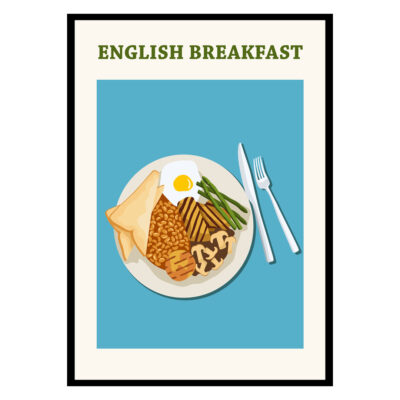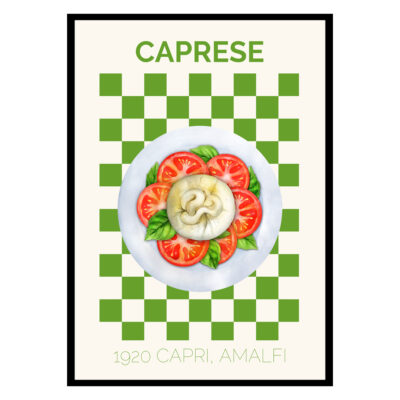This poster is the perfect addition to any kitchen or dining room, with its vibrant colors and stunning imagery of a steaming plate of pasta bolognese topped with fresh parmesan cheese. Not only does it add a touch of elegance to any space, but it’s also a great conversation starter that’s sure to impress any dinner guests.
Pasta Bolognese Italy Poster
€15 – €49Price range: €15 through €49
The genealogy of spaghetti bolognese is more tangled than you might think. Contrary to popular assumption, it has no definitive tie to the city of Bologna, in northern Italy. Historians generally agree that the dish originated in Imola, a city that sits just west of Bologna, and is home to the earliest documented ragù sauce, dating from the end of the 18th century.
When Napoleon invaded Italy in 1796, one of the things his soldiers brought with them was ragoût, a meat stew that formed the basis for the pasta sauce we know today. The word ragù comes from the French verb ragouter (meaning “to add flavour” or “to stimulate appetite”). Many affluent Italians were captivated by all things French, including the chic cuisine française.
The first record of ragoût being adapted into ragù is a sauce created by the Cardinal of Imola’s cook, Alberto Alvisi. Some 180 years later two journalists, Aureliano Bassani and Giancarlo Roversi, discovered Alvisi’s recipe for ragù per i maccheroni: a medley of browned mince, onion and tomato, flavoured with black pepper and cinnamon.
It took British and American tastebuds more than a century to catch up with the cardinal. After the second world war, soldiers returning from serving in Italy helped disseminate spaghetti bolognese by bringing their own versions of Italian meat and pasta dishes back home. In America the dish was also championed by Italian immigrants, who – excited by the cheapness of meat in comparison to Italy – began to add meat to dishes from their homeland. That resulted in the birth of spaghetti bolognese in its current American incarnation, often referred to simply as “spaghetti”, and other Italian-American staples like spaghetti and meatballs. In Britain in the 1960s dinner-party hosts would whip up a “spag bol” in a bid to appear accustomed to “exotic” cuisine.
A good bolognese can kindle a feeling of comfort and evoke memories. When I was four, the first meal my family ate after moving into our new house was spaghetti bolognese. My brother and I sat on top of cardboard boxes, ragù moustaches forming on our faces as the empty room began to resemble a home. Another part of the dish’s beauty is its sheer simplicity, and the ease with which you can adapt it. A sprinkle of nutmeg here, a slap of Bovril there, can make all the difference in your own “secret recipe”.
The first written recipe for a meat sauce ever to be called a “bolognese” comes from Pellegrino Artusi, an Italian businessman, whose 1891 cookbook “La scienza in cucina e l’arte di mangiar bene” or “Science in the Kitchen and the Art of Eating Well” became one of the most influential Italian cookbooks of all time. His recipe for maccheroni alla bolognese required:
lean veal meat, 150g
carne secca, 50g
butter, 40g
a quarter of a common onion
one half carrot
two ribs of white celery a palm, or the smell of green celery
a pinch of flour
a small pot of broth
very little salt
pepper and nutmeg, to taste
Artusi’s bolognese isn’t far off most modern recipes and is almost a mirror image of the “authentic” bolognese recipe sanctioned by the Accademia Italiana della Cucina in 1982. The only major differences involved swapping veal for beef and adding an additional cup of whole milk and half-cup of wine (though Artusi’s sauce could be made more decadent via the inclusion of dried mushrooms, truffles, chicken liver and half a glass of cream). But did Artusi’s original recipe opt for spaghetti? Though “maccheroni” was a catch-all term that could have indicated any form of pasta, he states that pasta that resembled “horse’s teeth” was preferable.
Although some passionate Italians are trying to disown spaghetti bolognese, the rest of the world continues to embrace the dish and its endless possibilities for adaptation. As a refugee exiled from its native land, spaghetti bolognese has assimilated into a new home: British and American dinner tables. Devotees of spaghetti bolognese don’t seem bothered about sitting it down and asking it where it “comes from originally”; they’ve simply accepted it for what it is: delicious
Pasta Bolognese museum-quality poster made on thick matte paper. Add a wonderful accent to your room and office with these posters that are sure to brighten any environment.
• Paper thickness: 0.26 mm (10.3 mil)
• Paper weight: 189 g/m²
• Opacity: 94%
• ISO brightness: 104%
• 21 × 30 cm posters are size A4
• Paper sourced from Japan
| Weight | N/A |
|---|





There are no reviews yet.